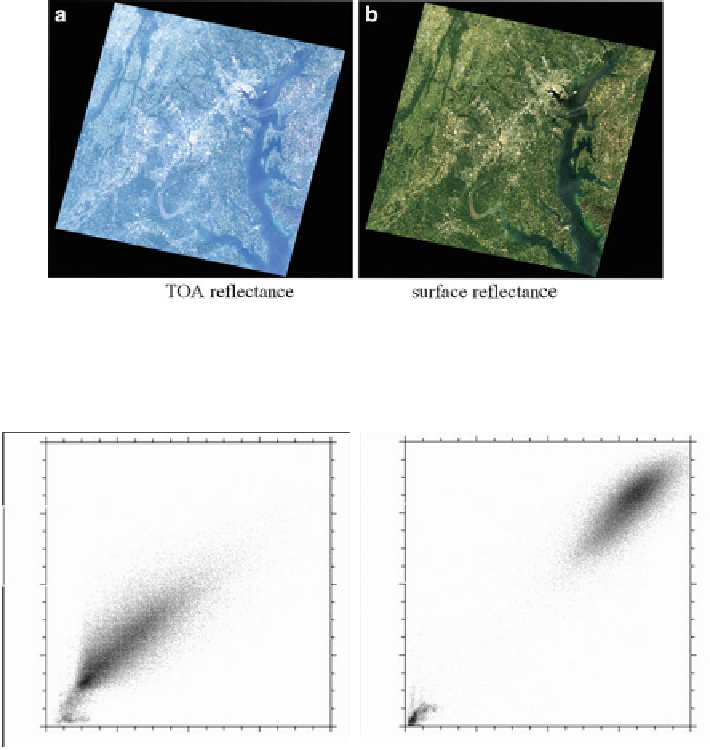Environmental Engineering Reference
In-Depth Information
Fig. 16.1
True color composites of a Landsat-7 ETM+ scene (WRS-2 path 15 and row 33
acquired on September 6, 2002) show that the surface reflectance (
b
) removes atmosphere effect
from TOA reflectance (
a
)
a
b
4000
1500
3000
1125
750
2000
1000
375
Land
Land
0
0
0
375
750
1125
1500
0
1000
2000
3000
4000
Red
NIR
Fig. 16.2
Scattering plot of surface reflectance for red (
a
) and NIR (
b
) between MODIS and
Landsat (in Fig.
16.1
). Scale factor for reflectance is 0.0001
Figure
16.1
shows the true color composites of Landsat ETM+ reflectance
produced from the LEDAPS system for a DC scene (WRS-2 path 15 and row 33)
acquired on September 6, 2002. The TOA reflectance image looks hazier and
brighter than surface reflectance.
Comparison of surface reflectance between Landsat and MODIS shows general
good agreements. In Fig.
16.2
, surface reflectance from Landsat in Fig.
16.1
are first
aggregated to MODIS resolution (500 m) and then compared to MODIS surface
reflectance. The scattering plot shows a general 1-to-1 relationship. Some disagree-
ments may be caused by the geolocation mismatch and bandwidth differences.
A stand-alone LEDPAS software package extracted from the NASA LEDAPS
system has been released to public for scientific uses. It is freely available from the
NASA GSFC LEDAPSWeb site (
www5
). The LEDAPS system has been adopted by

Search WWH ::

Custom Search